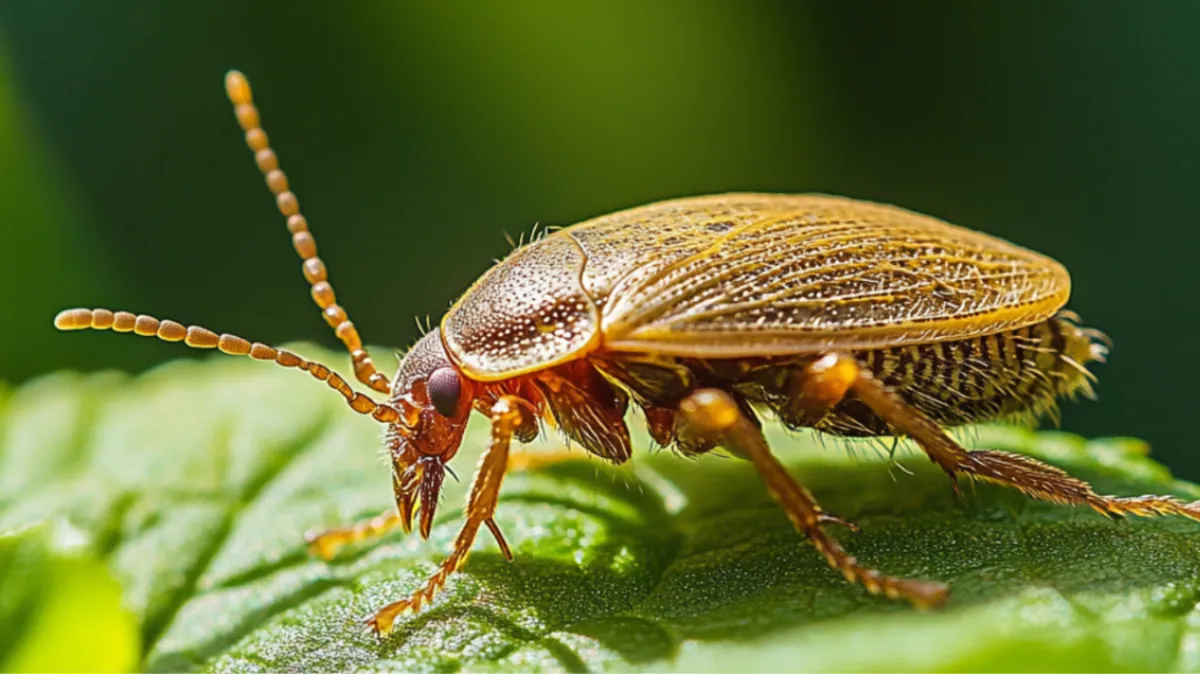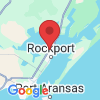
The Rockport Pest Journal
The Rockport Pest Control Journal

Pre-Summer Pest Roundup: Portland, TX Most Wanted Pest
Why Late Spring Pest Prevention is a Must-Do
As late spring transitions into summer, pest populations rapidly expand, making early action critical. Waiting too long to address minor pest concerns can result in widespread infestations that become harder to control as temperatures continue to rise. TotalPro Pest Control advises tackling pest issues in May to prevent them from becoming unmanageable in the summer months.
1. Warmer Weather Means More Pests
✔️ As late spring brings higher temperatures, pests that were dormant in cooler months become active and start searching for food and water.
✔️ The combination of heat, humidity, and abundant resources creates an ideal breeding environment for fleas, ticks, and stinging insects.
✔️ The earlier prevention efforts begin, the less chance there is for pest populations to spiral out of control.
2. Spring Signals the Start of Peak Breeding Season
✔️ By late spring, pests are multiplying at an alarming rate, making it crucial to interrupt their reproductive cycles before infestations surge.
✔️ Fleas and ticks attach to pets and people, spreading throughout homes within days if left unchecked.
✔️ Wasps, fire ants, and mosquitoes establish nests and breeding grounds, increasing their numbers before the full heat of summer arrives.
3. Safeguard Your Family and Pets from Harmful Pests
✔️ Fleas and ticks are more than just annoying—they are disease carriers capable of spreading Lyme disease, Rocky Mountain spotted fever, and other illnesses.
✔️ Stinging insects like wasps and fire ants pose a serious risk, especially for children, pets, and those with allergies.
✔️ Mosquito populations explode in late spring, bringing higher chances of bites and the spread of diseases like West Nile Virus and Zika.
4. Protect Your Yard & Outdoor Living Spaces
✔️ Late spring is the perfect time for yard maintenance to eliminate pest-friendly conditions before summer heat increases activity.
✔️ Tall grass, overgrown shrubs, and standing water create prime breeding grounds for insects and hiding places for rodents.
✔️ Keeping your yard trimmed, dry, and debris-free significantly reduces potential nesting sites and infestation risks.
Late Spring’s Most Unwanted Pests & How to Stop Them
As temperatures rise, fleas, ticks, and wasps become more active, posing risks to pets, families, and outdoor spaces. These common late-spring pests thrive in warm, humid conditions, making early prevention essential for a comfortable and pest-free summer.
Fleas: The Tiny Biters That Multiply Rapidly
Fleas thrive in humid environments and latch onto pets, carpets, and upholstered furniture. Even homes without pets can experience flea problems, as these pests can hitch a ride indoors on wildlife, stray animals, and even clothing.
How to Keep Fleas Out of Your Home & Yard:
✔ Protect Pets First: Use vet-approved flea preventatives like topical treatments, oral medications, or flea collars.
✔ Vacuum Regularly: Clean carpets, furniture, and pet bedding frequently to remove flea eggs, larvae, and adults.
✔ Lawn Maintenance Matters: Mow your lawn, trim overgrown vegetation, and remove leaf litter—fleas breed in tall grass and shaded areas.
✔ Wash Pet Bedding Weekly: Fleas lay eggs in soft materials, so regular washing in hot water helps eliminate them.
✔ Seek Professional Help: If home treatments aren’t enough, professional flea extermination ensures long-term control.
Ticks: The Stealthy Disease-Carriers
Ticks hide in tall grass, shrubs, and wooded areas, patiently waiting for a host to pass by. These blood-sucking pests are not just a nuisance—they transmit Lyme disease, Rocky Mountain spotted fever, and other illnesses.
How to Reduce Tick Risks in Late Spring:
✔ Keep Grass Short: Mow your lawn and trim overgrown vegetation to eliminate tick habitats.
✔ Create a Tick-Free Barrier: Use wood chips, gravel, or mulch as a border between your lawn and wooded areas to limit tick migration.
✔ Wear Protective Clothing: Light-colored clothing makes ticks easier to spot, and insect repellents with DEET or permethrin help keep them off your skin.
✔ Check for Ticks After Outdoor Activities: Carefully inspect your body, clothing, and pets after hiking, gardening, or spending time in wooded areas.
✔ Use Tick Prevention for Pets: Ask your vet about topical treatments, tick collars, or oral medications to keep ticks off your furry friends.
Wasps: The Aggressive Nest Builders
Unlike honeybees, wasps can sting multiple times and become highly territorial, particularly in late spring when they build nests near homes, patios, and outdoor gathering spaces.
How to Deter Wasps from Nesting Near Your Home:
✔ Inspect & Remove Early: Check under eaves, decks, sheds, and porch railings for small nests and remove them before they grow into larger colonies.
✔ Seal Entry Points: Close off gaps in walls, attics, and rooflines to prevent wasps from nesting inside.
✔ Keep Trash Secure: Wasps scavenge for sugary foods—keep garbage bins tightly sealed and rinse out soda cans before disposal.
✔ Use Natural Repellents: Plant wasp-deterring flowers like marigolds, peppermint, and eucalyptus to help keep them away.
✔ Don’t Attempt DIY Wasp Nest Removal: Wasps become aggressive when their nest is threatened—let TotalPro Pest Control handle large or difficult nest removals safely.
Essential Pre-Summer Pest Prevention Steps
As the temperatures rise and summer approaches, pests become more active, looking for food, water, and shelter. Taking preventive measures now can keep your home pest-free before infestations take hold. Follow these key steps to protect your home and yard from common pre-summer pests like mosquitoes, roaches, ants, and rodents.
1. Yard & Outdoor Maintenance: Minimize Pest Habitats
Your yard is the first line of defense against pests—maintaining it properly reduces nesting areas and eliminates attractants.
✔ Eliminate Standing Water: Mosquitoes and other moisture-loving pests breed in stagnant water. Regularly empty birdbaths, planters, and kiddie pools and fix any drainage issues in your yard.
✔ Clear Gutters & Downspouts: Clogged gutters trap moisture, leaves, and debris, creating the perfect environment for cockroaches, mosquitoes, and even rodents.
✔ Store Firewood & Compost Away from Your Home: Keep firewood piles, mulch, and compost bins at least 20 feet away from your home’s foundation to discourage termites, ants, and roaches.
✔ Trim Overgrown Vegetation: Cut back bushes, tree branches, and vines that touch your home to prevent easy access for spiders, rodents, and insects.
2. Seal Entry Points: Block Pests Before They Get Inside
Pests squeeze through the smallest gaps to gain entry—sealing up potential access points is an easy and effective way to keep them out.
✔ Inspect Doors, Windows & Vents: Check for gaps, loose seals, or torn screens, as these are easy entryways for flying and crawling pests. Repair or replace damaged screens as needed.
✔ Seal Cracks & Crevices: Examine your home’s foundation, siding, and walls for small cracks or openings and use caulk or weatherproof sealant to close them off.
✔ Install Door Sweeps: Prevent crawling pests like ants, roaches, and spiders from slipping in under exterior doors by adding durable door sweeps.
✔ Secure Utility Openings: Pests often enter through gaps around pipes, vents, and electrical wiring. Use steel wool or mesh screens to seal these areas.
3. Keep Your Home Clean & Uninviting to Pests
A clean home is less attractive to pests since they thrive in clutter, crumbs, and unattended messes.
✔ Vacuum & Dust Regularly: Eliminating dust, crumbs, and pest eggs or larvae reduces infestations before they begin. Pay special attention to corners, baseboards, and under furniture.
✔ Store Pantry Items Properly: Keep flour, sugar, cereal, and pet food in sealed, airtight containers to prevent ants, weevils, and pantry moths.
✔ Dispose of Garbage Properly: Take out trash frequently and use bins with tight-fitting lids to keep pests from scavenging inside. Rinse out recycling containers to remove lingering food residue.
✔ Clean Up After Meals: Wipe down counters, tables, and stovetops immediately after cooking or eating to remove food debris that attracts ants and roaches.
If you need expert help, TotalPro Pest Control provides targeted treatments to protect your home from fleas, ticks, wasps, and other summer invaders.
Schedule your pre-summer pest control service today! [https://totalpropestcontrolportland.com/ ]

Schedule a Pest Inspection
Ready to schedule a pest inspection? Contact us today.

